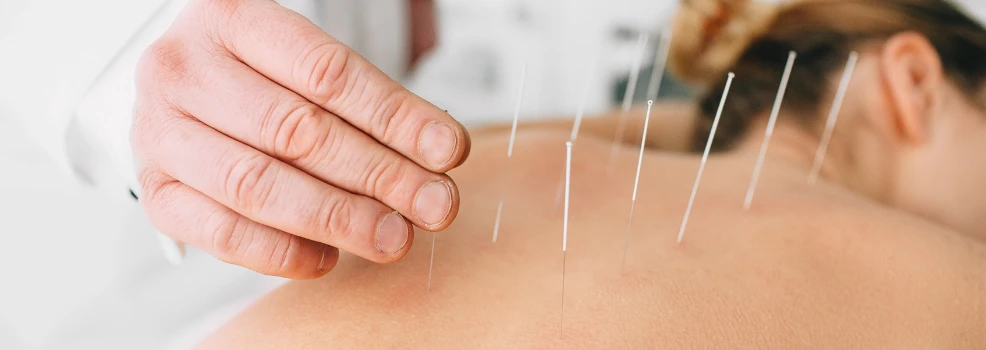When you think about acupuncture treatment, you might envision the insertion of needles into your body. At that moment, a question arises: Does it hurt? Well, no, it’s not as painful as you might think. Growing scientific research consistently supports the application of acupuncture not only for pain management, but also for the treatment of various other conditions. In this blog, we will explore how acupuncture treatment is effective in managing pain and what conditions they treat.
How Does Acupuncture Treatment Help in Pain Management?
According to traditional Chinese medicine, the body contains at least 2,000 acupuncture points. By inserting needles into these points, it can activate various tissues like nerves, muscles, connective tissue, blood vessels, and the skin. This stimulation can ease muscle tension, reduce inflammation, and support tissue healing. Additionally, it can prompt the release of endorphins, the body’s natural pain-relievers, aiding in the treatment of painful conditions and injuries. Let’s discuss this in detail:
Endorphin Release
One widely accepted theory suggests that acupuncture stimulates the release of endorphins, the body’s natural painkillers. The insertion of needles triggers the central nervous system to release these neurotransmitters, which can help reduce pain perception and promote a sense of well-being.
Neural Modulation
Acupuncture treatment may also influence the way nerves transmit signals. By activating specific nerve fibres, acupuncture may disrupt the pain signals travelling to the brain, leading to a reduction in pain sensation. This neural modulation effect is believed to contribute to the analgesic properties of acupuncture.
What Exactly Happens During an Acupuncture Treatment?
During the treatment, a qualified Physiotherapist will conduct a thorough assessment to determine the most appropriate acupuncture points for treatment. They will ask you about your medical history. Once the assessment is complete, the Physiotherapist will ensure you are lying or sitting in a comfortable position for the treatment. In addition, the Physiotherapist may provide a towel, gown, or sheet for your comfort. The process of the treatment involves:
Inserting Needles
In this process, fine needles are skillfully inserted into specific points across your body at varying depths. These needles are incredibly thin, generally not causing any discomfort upon insertion. Some individuals don’t feel them inserted at all. An acupuncture treatment involves the use of 5 to 20 needles generally, and as a needle reaches its intended depth, you might experience a mild, fleeting aching sensation.
Manipulating Needles
Following insertion, your Physiotherapist may delicately move or twirl the needles in place. This technique serves to stimulate specific acupuncture points and promote the flow of energy, known as Qi, throughout the body.
Needle Removal
In the majority of cases, the needles are left in position for approximately 10 to 20 minutes, allowing you to lie still and unwind. The removal of the needles is generally a painless process, completing the session seamlessly.
What Are the Conditions Treated with Acupuncture?
Acupuncture is recognized by the World Health Organization (WHO) as a viable treatment option for a variety of conditions, including pain-related disorders. Common conditions for which acupuncture is often sought include:
Musculoskeletal Pain: Acupuncture is frequently used to manage musculoskeletal pain conditions such as back pain & neck pain, arthritis, and sports injuries.
Headaches and Migraines: Many individuals turn to acupuncture for relief from chronic headaches and migraines, finding it effective in reducing the frequency and intensity of episodes.
Chronic Pain Syndromes: Conditions like fibromyalgia and chronic fatigue syndrome may benefit from acupuncture as part of a comprehensive pain management strategy.
Neuropathic Pain: It is a chronic pain caused by damaged nerves. Acupuncture has shown significant results in addressing neuropathic pain, a type of pain caused by damage or dysfunction of the nervous system.
Stress and Anxiety: Many people turn to acupuncture as a means of stress reduction and anxiety management. Acupuncture sessions are believed to promote relaxation and balance in the body, potentially alleviating symptoms of stress and anxiety.
Insomnia and Sleep Disorders: Acupuncture treatment also contributes to improved sleep patterns and the management of insomnia. It is often sought by individuals experiencing difficulty falling asleep or staying asleep.
Conclusion
By stimulating particular points on the body with incredibly thin needles, acupuncture enhances the flow of energy, or Qi, and encourages the body’s natural healing processes. While scientific research on acupuncture’s mechanisms is ongoing, numerous studies suggest its potential in managing various types of pain. Whether through the release of endorphins, modulation of neural pathways, or reduction of inflammation, acupuncture seems to offer a valuable option for individuals looking for alternative pain relief methods.
For those seeking acupuncture treatment, Bridgwater Physiotherapy offers this alternative therapy. Our skilled practitioners are dedicated to providing personalized care and incorporating acupuncture into comprehensive treatment plans. If you are considering acupuncture as part of your pain management strategy, consulting with our experienced professionals can be a valuable step toward holistic well-being. Contact Us Today!


